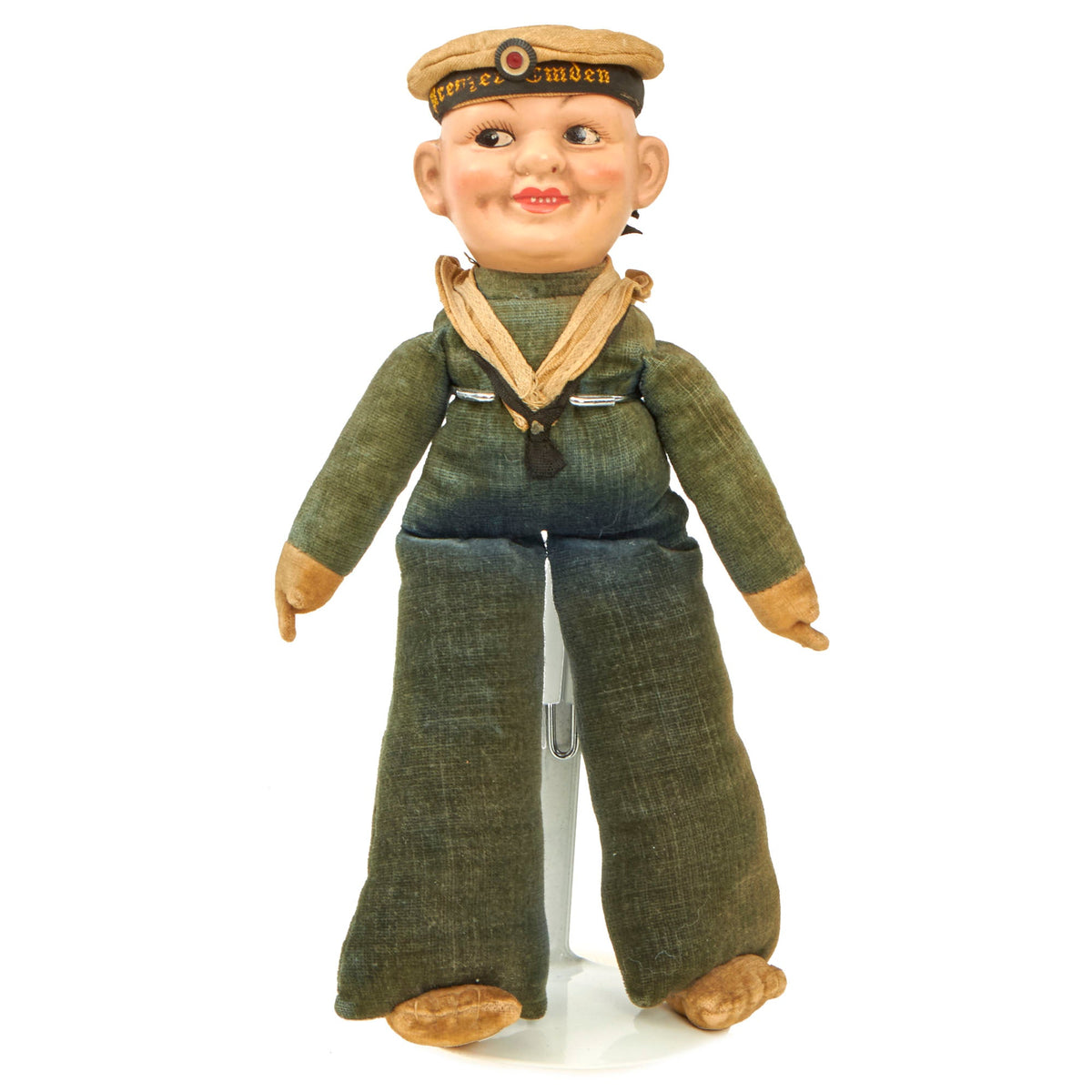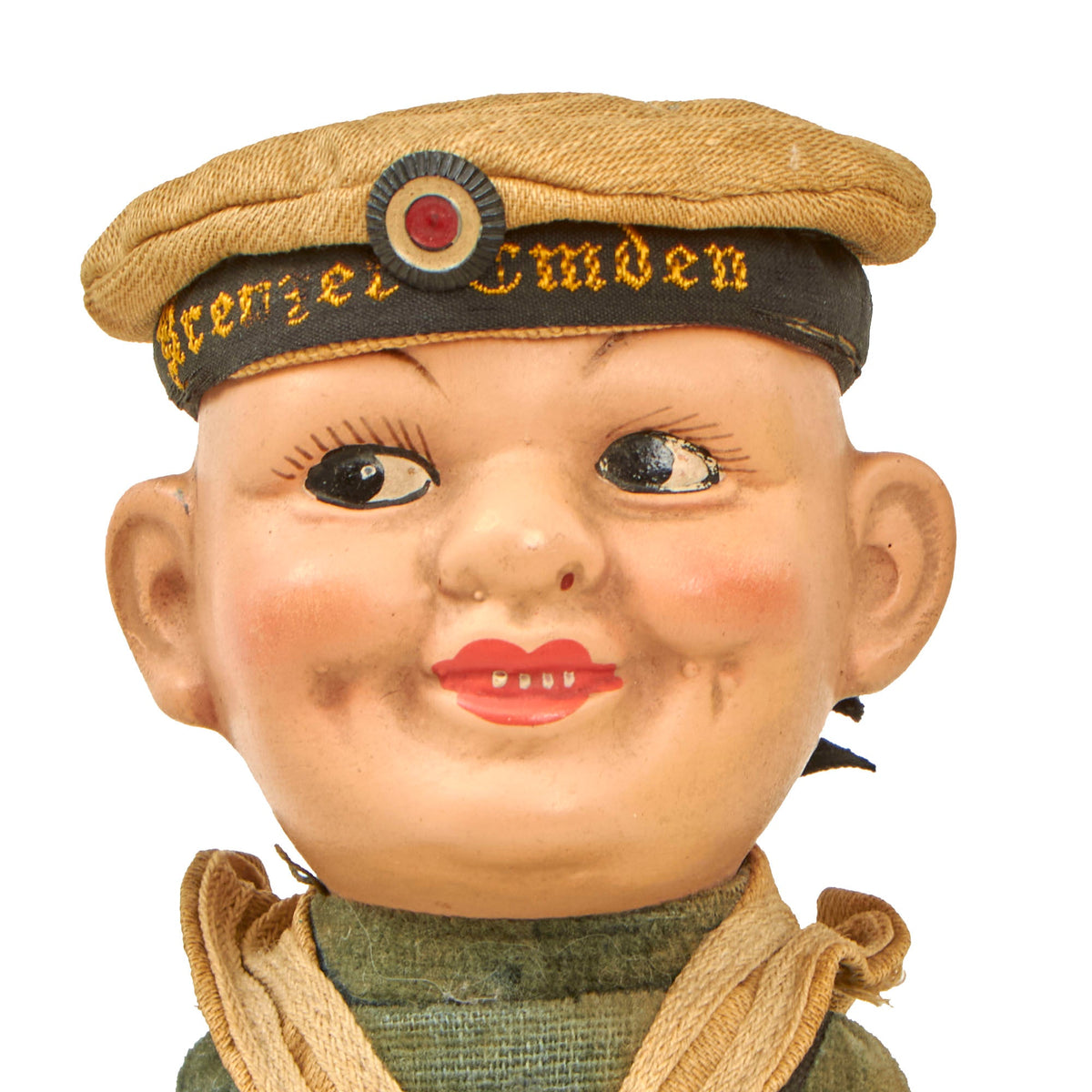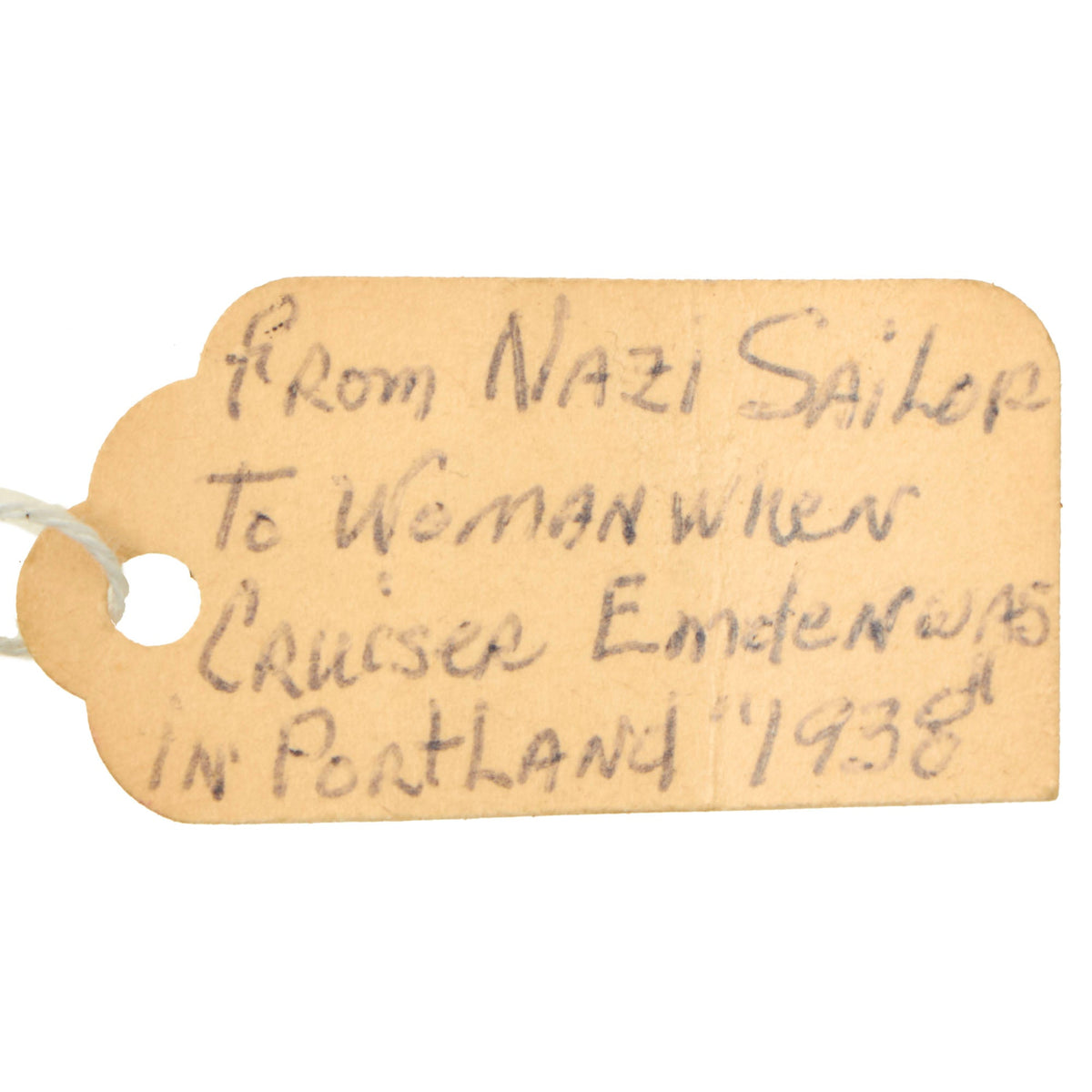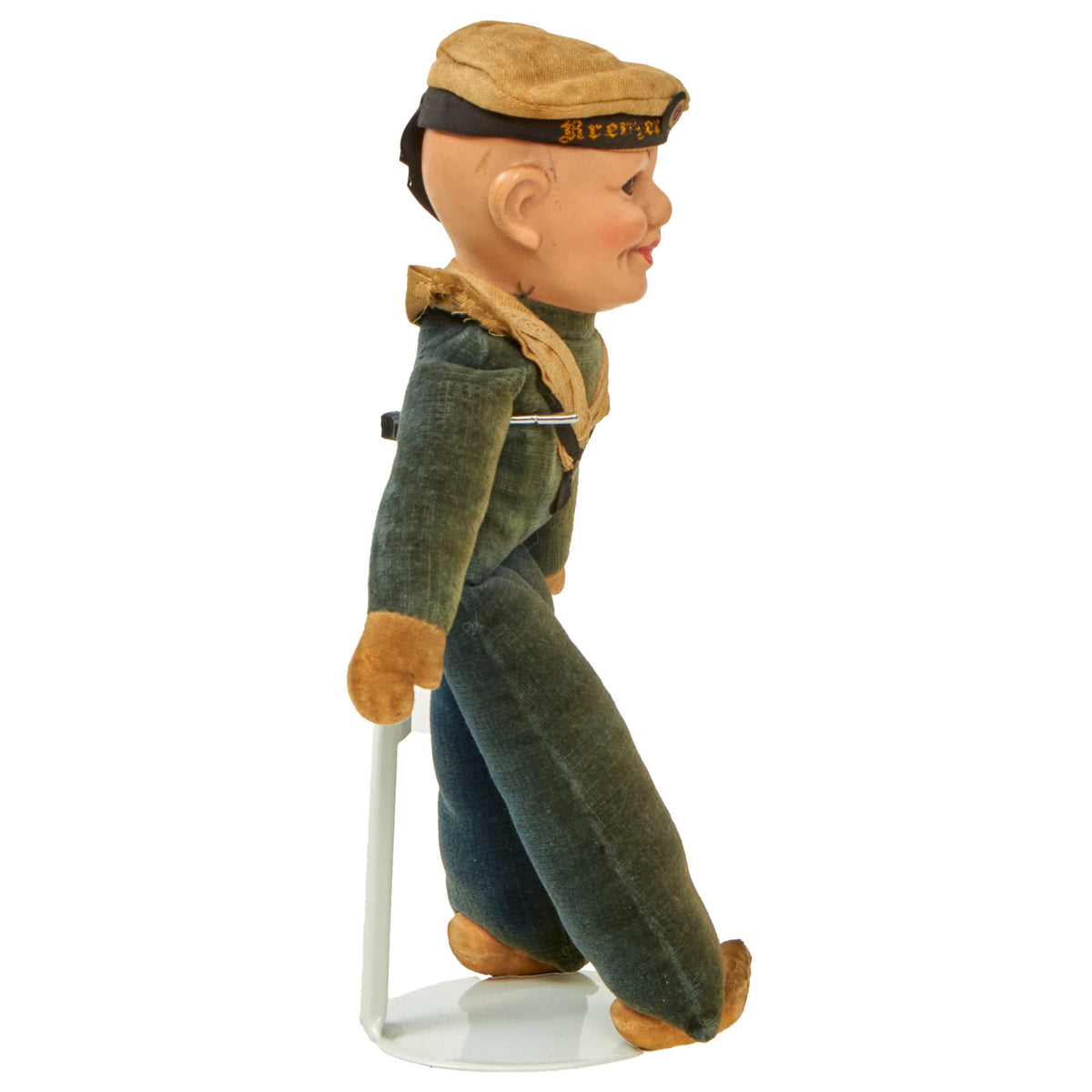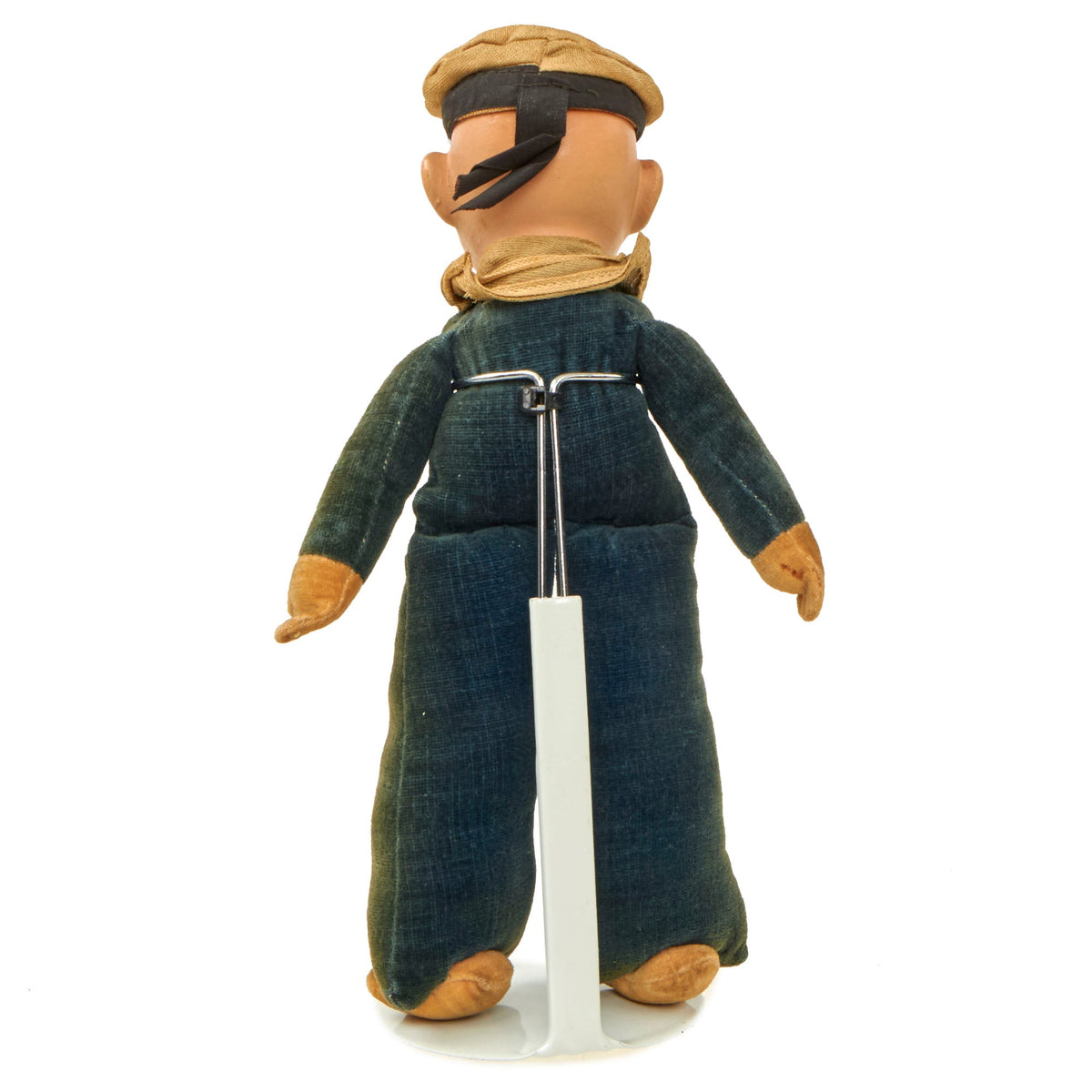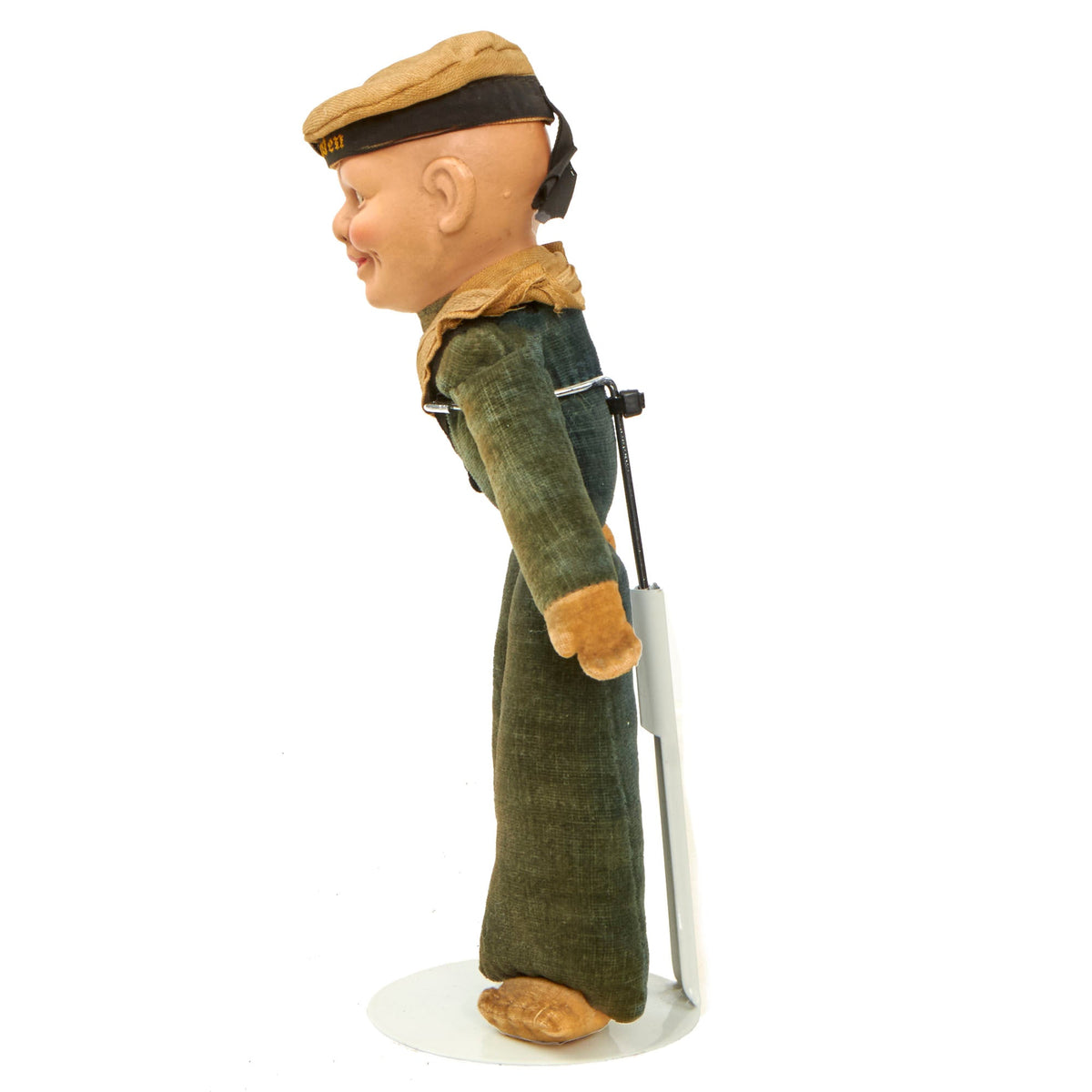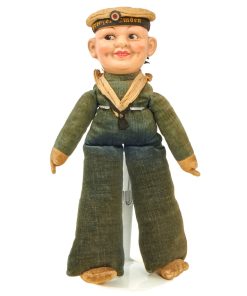Original German Pre-WWII Weimar Republic Reichsmarine Sailor Doll from Cruiser Emden Given to Woman in Portland in 1938 Original Items
$ 350,00 $ 105,00
Original Item: Only One Available. Here we have a lovely stuffed German doll, probably from the Weimar period or maybe even the late Imperial period, which features a childlike painted composition material head. It is made from a blue plush material with white plush hands and feed, and has been decorated with a scarf and “Donald Duck” cap to look like a sailor. These are definitely high quality fabricated items, and the sailor cap even has an embroidered cap tally that reads Kreuzer Emben (Cruiser Emben). The tally is even made from the correct rayon material!
The doll measures 8 1/2 inches in overall height, and comes with a lovely modern metal stand that partly supports the doll. Attached to this is a small old tag indicating where the doll was acquired:
FROM N**I Sailor
TO WOMAN WHEN
CRUISER EMDEN WAS
IN PORTLAND “1938”
We have checked the information available about Cruiser Emden, and during 1938 she was definitely in the North Atlantic during 1939, so the tag most likely refers to Portland Maine.
A very interesting piece of German Pre-WWII memorabilia, ready to add to your collection!
The Weimar Republic (Weimarer Republik), officially the German Reich (Deutsches Reich), also referred to as the German People’s State (Deutscher Volksstaat) or simply the German Republic (Deutsche Republik), was the German state from 1918 to 1933. As a term, it is an unofficial historical designation that derives its name from the city of Weimar, where its constitutional assembly first took place. The official name of the republic remained the German Reich as it had been during the German Empire because of the German tradition of sub-states.
Although commonly translated as “German Empire,” Reich here better translates as “realm” in that the term does not necessarily have monarchical connotations in itself. The Reich was changed from a constitutional monarchy into a republic. In English, the country was usually known simply as Germany, and the Weimar Republic name became mainstream only in the 1930s.
The Reichswehr (Realm Defense) formed the military organization of Germany from 1919 until 1935, when it was united with the new Wehrmacht (Defense Force). At the end of World War I, the forces of the German Empire were disbanded, the men returning home individually or in small groups. Many of them joined the Freikorps (Free Corps), a collection of volunteer paramilitary units that were involved in suppressing the German Revolution and border clashes between 1918 and 1923.
The Reichswehr was limited to a standing army of 100,000 men, and a navy of 15,000. The establishment of a general staff was prohibited. Heavy weapons such as artillery above the caliber of 105 mm (for naval guns, above 205 mm), armored vehicles, submarines and capital ships were forbidden, as were aircraft of any kind. Compliance with these restrictions was monitored until 1927 by the Military Inter-Allied Commission of Control.
The Reichsmarine was the Navy Division of the Reichswehr.
Fast Shipping with Professional Packaging
Thanks to our longstanding association with UPS FedEx DHL, and other major international carriers, we are able to provide a range of shipping options. Our warehouse staff is expertly trained and will wrap your products according to our exact and precise specifications. Prior to shipping, your goods will be thoroughly examined and securely secured. We ship to thousands clients each day across multiple countries. This shows how we're dedicated to be the largest retailer on the internet. Warehouses and distribution centres can be located throughout Europe as well as the USA.
Note: Orders with more than one item will be assigned a processing date depending on the item.
Before shipping before shipping, we'll conduct a thorough inspection of the items you have ordered. Today, the majority of orders will be delivered within 48 hours. The delivery time will be between 3-7 days.
Returns
The stock is dynamic and we cannot completely manage it because multiple stakeholders are involved, including our factory and warehouse. So the actual stock may alter at any time. It's possible that you may not receive your order once the order has been made.
Our policy is valid for a period of 30 days. If you don't receive the product within 30 days, we are not able to issue a refund or an exchange.
You can only return an item if it is unused and in the same state as the day you received it. You must have the item in its original packaging.
Related products
Uncategorized
Angolan Rebel 1970s era 60mm Inert Display Mortar from Angolan Civil War Original Items
Uncategorized
Uncategorized
Uncategorized
Uncategorized
Uncategorized
Uncategorized
Uncategorized
Uncategorized
Uncategorized
Uncategorized
Uncategorized
Armored Burgonet Helmet & Polearm from Scottish Castle Leith Hall Circa 1700 Original Items
Uncategorized
Uncategorized
Uncategorized
Uncategorized
Uncategorized
Uncategorized
Band of Brothers ORIGINAL GERMAN WWII Le. F.H. 18 10.5cm ARTILLERY PIECE Original Items
Uncategorized
Uncategorized
Uncategorized
